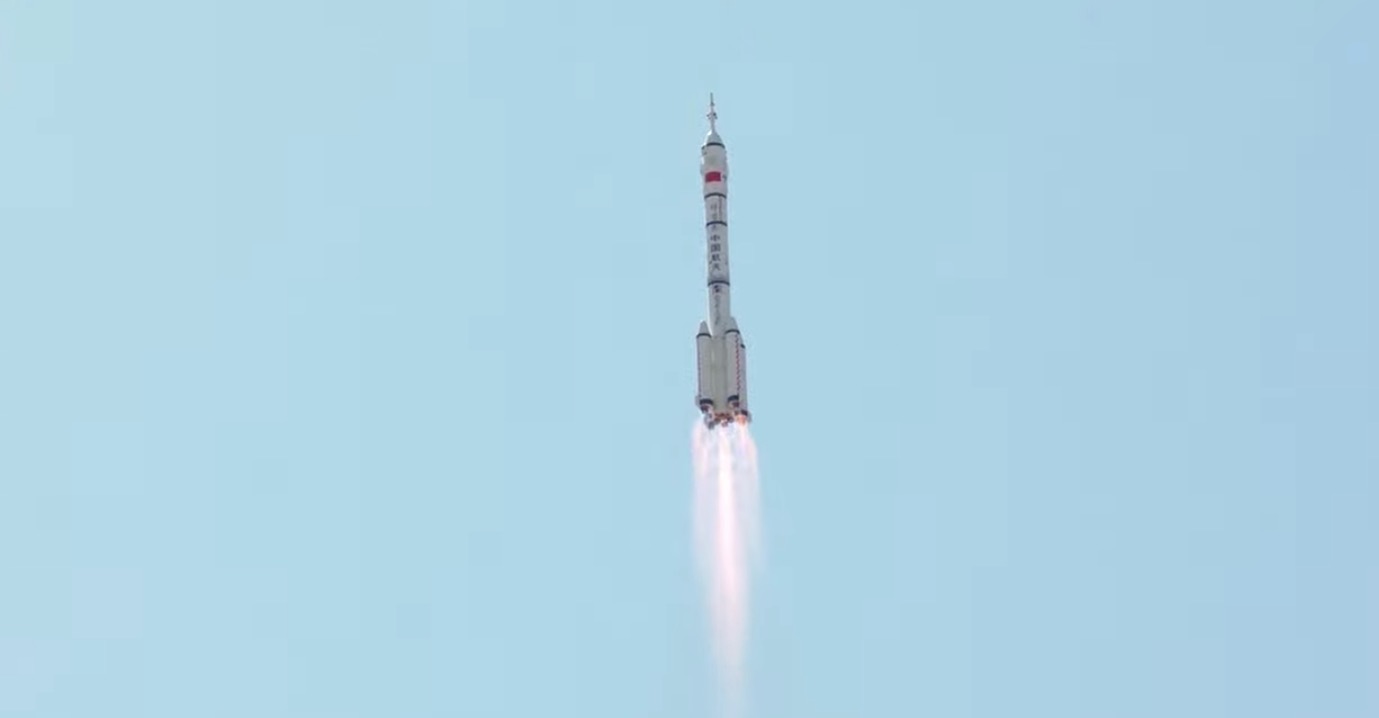China launches 3 astronauts to oversee construction of new Tiangong space station
The Shenzhou 14 trio includes Liu Yang, who in 2012 became the first Chinese woman to reach space.
China has sent its third crew to the nation's new Tiangong space station.
A Long March 2F rocket carrying the Shenzhou 14 spacecraft lifted off from Jiuquan Satellite Launch Center in the Gobi Desert today (June 4) at 10:44 p.m. EDT (0244 GMT; 10:44 June 5 local time).
The three Shenzhou 14 crewmembers — commander Chen Dong, Liu Yang and Cai Xuzhe — were officially revealed as the crew earlier on Saturday. They are now heading for Tianhe, the core module of the still-under-construction Tiangong, with Shenzhou 14 expected to dock around six hours after launch.
Related: The latest news about China's space program
The three spaceflyers are expected to spend six months aboard Tianhe. The 43-year-old Chen, a veteran of the 2016 Shenzhou 11 mission, is embarking on his second mission and first as commander. Liu, 43, became China's first woman in space aboard Shenzhou 9 in 2012 and is making her second flight, while Cai, 46, is making his first trip to space.
"The three of us are relatively young in terms of age," Chen told media at a press conference on Saturday. "But we are fully prepared, enthusiastic and confident. The Shenzhou 14 mission is key to the construction of the space station, with more difficulties and greater challenges."
All three crew members were selected in China's second astronaut selection round in 2010, meaning this is the first mission without one of China's older, first batch of astronauts along for the ride.
Breaking space news, the latest updates on rocket launches, skywatching events and more!
Awaiting the astronauts is Tianhe, the 54-foot-long (16.6 meters) space station core module that was launched in April 2021. It has so far been visited by a total of six astronauts, who made up the Shenzhou 12 and Shenzhou 13 crews.
The three new arrivals are tasked with overseeing the arrival of two new modules, named Wentian ("Quest for the Heavens") and Mengtian ("Dreaming of the Heavens"), which are due to launch in late July and October, respectively.
After the modules reach and dock with Tianhe, the crew, in cooperation with ground teams, will use Tianhe's large robotic arm to reposition the modules from the forward docking port to lateral ports.
The success of these missions would see the completion of the T-shaped Tiangong space station. The Shenzhou 14 trio are also expected to embark on spacewalks, engage in outreach activities, install new equipment both inside and outside the space station and conduct science experiments.
The Wentian module includes new crew quarters. So, if all goes according to plan, the Shenzhou 14 astronauts will welcome aboard the next trio of astronauts late in the year.
Shenzhou 15 is expected to launch in the December timeframe. Its arrival at Tiangong would see the first crew handover on the Chinese space station, with the orbital outpost hosting six astronauts for a few days.
China initiated its space station project back in 1992, first developing the ability to send humans to space and developing small test labs for short-term visits.
The completed Tiangong station is about 20% as massive as the International Space Station, according to Chinese space officials.
China last month launched the Tianzhou 4 cargo spacecraft to deliver thousands of pounds of supplies, propellant and science experiments to Tianhe to support the Shenzhou 14 mission.
Meanwhile, the Shenzhou 15 spacecraft and a Long March 2F rocket will be on standby at Jiuquan in case of an emergency affecting Shenzhou 14.
Follow us on Twitter @Spacedotcom or on Facebook.

Andrew is a freelance space journalist with a focus on reporting on China's rapidly growing space sector. He began writing for Space.com in 2019 and writes for SpaceNews, IEEE Spectrum, National Geographic, Sky & Telescope, New Scientist and others. Andrew first caught the space bug when, as a youngster, he saw Voyager images of other worlds in our solar system for the first time. Away from space, Andrew enjoys trail running in the forests of Finland. You can follow him on Twitter @AJ_FI.

